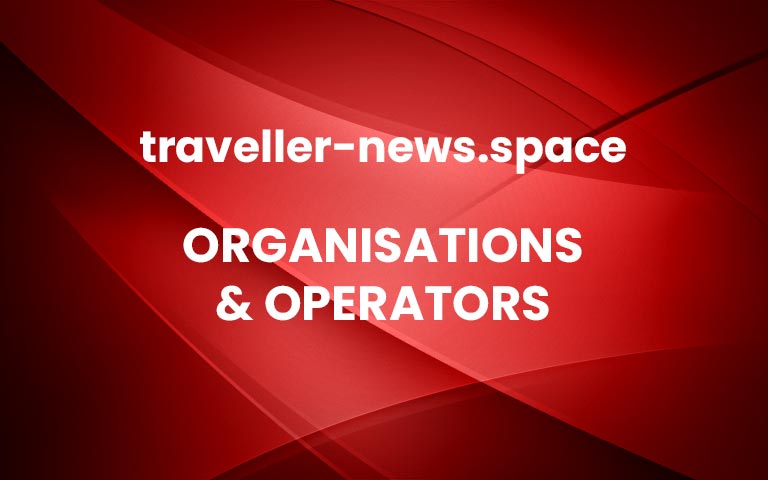ITB China, the highly anticipated marketplace for China’s travel industry, is gearing up for its grand live event from 12 – 14 September 2023. With an impressive line-up of exhibitors representing all travel trade segments, the three-day B2B show promises to reconnect global travel suppliers with the resurgent Chinese market.
The international participation and strong demand from industry players provide a positive outlook for the show. Looking ahead, ITB China 2024 will mark its return next year on May 27 – 29. Save the date and be part of another remarkable edition of the annual event.The organizer, Messe Berlin (Shanghai), is pleased to announce that ITB China 2023 has reached full capacity of exhibition space reserved for the upcoming event. Under this year’s slogan “Crossing Barriers • Connecting Markets”, ITB China will play a pivotal role in reconnecting global travel suppliers with the resurgent Chinese market, by offering abundant business opportunities through face-to-face meetings onsite and the latestinterpretation of the travel trends in China.
Media and Visitor registration is now open at: reg.itb-china.com
David Axiotis, General Manager of Messe Berlin (Shanghai), expresses his excitement, stating: “With the sudden opening of China’s outbound travel market at the beginning of this year, Chinese buyers are now eagerly anticipating access to international resources to rebuild and update their product portfolios. ITB China 2023 will facilitate this with attending travel suppliers from Europe (24%), Asia (28%), Americas (15%), Middle East(16%), Oceania (10%), and Africa (7%), underlining the global nature of the event, and our role in driving the recovery of the Chinese international travel market.
The exhibition showcases a wide range of global destinations, including national and regional tourism organizations from Aragón, Andalucía, Berlin, California, Catalonia, Chile, Croatia, Czech Republic, Finland, Hungary, France, Galicia, Germany, Israel, Italy, Los Angeles, Madrid, Malta, Malaysia, New Zealand, Montenegro, Netherlands, Poland, Portugal, Scandinavian Tourist Board (Denmark & Norway) Serbia, Spain, Switzerland,Tahiti and Turkey.ADVERTISEMENTAmong the global destinations, newcomers such as Beijing, Bursa, Chengdu, Maldives, NEOM, New York, Raktda, Saudi Arabia, and the United Kingdom will make their debut on the ITB China show floor. The European Travel Commission (ETC) will once again showcase a prominent presence, emphasizing the diverse and appealing travel experiences that Europe has to offer.The exhibition will also feature many global hotels and accommodation providers including this year’s Partner Hotel Wyndham Hotels & Resorts, Bintan Resorts, Gloria Hotels & Resorts, INSPIRE Entertainment Resort, Jin Jiang International, Jinling Hotels & Resorts, LN International Hospitality Management, Mayfair Cruises, Meliá Hotels International, Pan Pacific Hotels Group, Restel, S.A, Travco Corporation, VinWonders,WebBeds and many more.
Moreover, online travel agencies (OTA’s) and transportation & mobility providers will be also prominently featured, offering their exceptional products and services at this year’s show. Some notable names among them include Trip.com Group, Fliggy, Expedia Group, Avis Budget Group, Bohr Omnibus GmbH, Europcar, Hertz Car Rental, Oceanwide Expeditions, Poseidon Expeditions, Reluxtrans Car service and TOPONE Car Service.
The travel technology segment is back with a large number of exhibitors including DerbySoft, DidaTravel, Flightroutes24, Fly Today, Freed Group, HeyTrip, JegoTrip, Miki Travel, Mondee, Shiji Group, TEK TRAVELS DMCC, Yalago or YunShang Technology to name just a few.
Demand for places at the ITB China show floor is also high among exhibitors from attractions, tour operators and customized travel providers such as Bounty Group Bali, Brilliant Africa,Defence Collective Singapore, Designer Safari, Disneyland Paris, EternityX, Hurtigruten group, Beijing Tianxingjian International Travel Service, Benchmark Adventure, Bhutan Land of Happiness Tours, Kuoni Tumlare, Travel The Guianas & Caribean andYoyiyo.it.
ITB China is proud to gather top and hand-selected Chinese buyers including an impressive 86% of founders, C-level executives, directors and senior managers from leading Chinese travel agencies. The event’s matchmaking system ensures successful meetings and high-value connections, maximizing business opportunities during the attendees’ limited time at the exhibition. Coinciding with the travel trade show, the ITBChina Conference will provide a platform for exchange and knowledge transfer with experts and top-level speakers, further enriching the experience for all participants.
Save the date! ITB China 2024 has been scheduled for 27- 29 May, marking its return to the regular time slot in spring. The organizer is delighted to announce that the exhibitor registration for 2024 is now open, catering to the pressing demands of the exhibitors.Interested exhibitors can secure their presence for next year’s event or inquire about lastminute freed-up spaces to join this year’s ITB China 2023. Open slots will be allocated according to a waiting list. For more information, please visit www.itb-china.com or contact [email protected]
Older
Major study reveals Jet2.com and Jet2holidays continue to lead the industry for customer service
Newer
ATLANTIS SANYA FUELS LOCAL NIGHT ECONOMY WITH MYRIAD OF SUMMER NIGHT ACTIVITIES More


